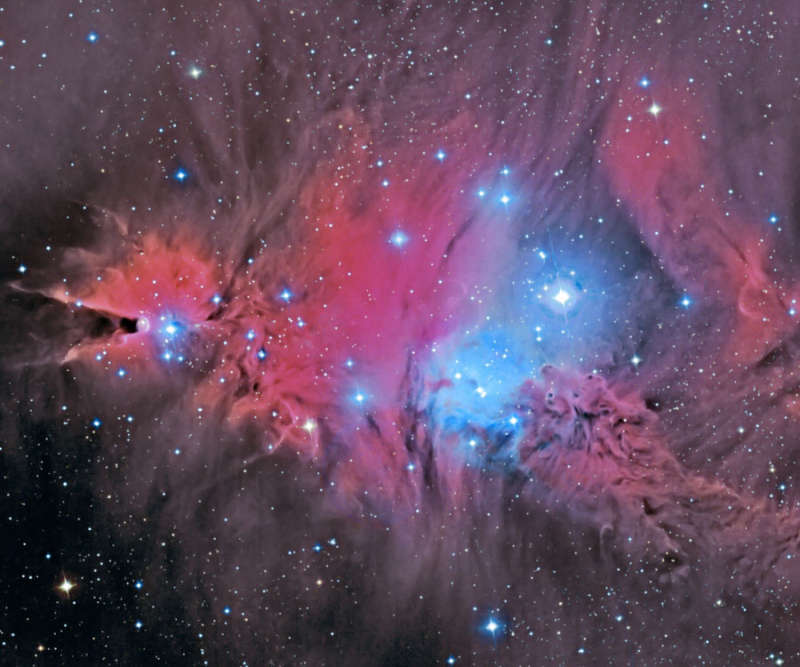Credit & Copyright: Dieter Willasch
(Astro-Cabinet)
Explanation:
Strange shapes and textures can be found in neighborhood
of the Cone Nebula.
The unusual shapes
originate from fine interstellar
dust reacting in
complex ways with the energetic light and
hot gas being expelled by the young stars.
The brightest star on the right of the
above picture is S Mon,
while the region just below it has been nicknamed the
Fox Fur Nebula for its color and structure.
The blue glow directly surrounding
S Mon results from
reflection,
where neighboring dust reflects light from the bright star.
The red glow
that encompasses the whole region results not only from
dust reflection but also emission from
hydrogen gas ionized by starlight.
S Mon
is part of a young open
cluster of stars named
NGC 2264, located about 2500 light years away toward the constellation of the Unicorn
(Monoceros).
The origin of the mysterious geometric Cone Nebula, visible
on the far left, remains
a
mystery.
1999 2000 2001 2002 2003 2004 2005 2006 2007 2008 2009 2010 2011 2012 2013 2014 2015 2016 2017 2018 2019 2020 2021 2022 2023 2024 2025 |
Yanvar' Fevral' Mart Aprel' Mai Iyun' Iyul' Avgust Sentyabr' Oktyabr' Noyabr' Dekabr' |
NASA Web Site Statements, Warnings, and Disclaimers
NASA Official: Jay Norris. Specific rights apply.
A service of: LHEA at NASA / GSFC
& Michigan Tech. U.
|
Publikacii s klyuchevymi slovami:
tumannost' Konus - tumannost' Lisii meh - Rasseyannoe skoplenie
Publikacii so slovami: tumannost' Konus - tumannost' Lisii meh - Rasseyannoe skoplenie | |
Sm. takzhe:
Vse publikacii na tu zhe temu >> | |
